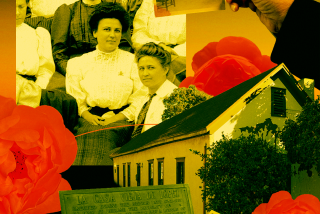MISSION SAN JUAN CAPISTRANO
- Share via
Mission San Juan Capistrano
31522 Camino Capistrano
San Juan Capistrano
(714) 493-1424
LOCATION: off Interstate 5 and Ortega Highway, at the corner of Camino Capistrano.
HOURS OF OPERATION: 7:30 a.m.-5 p.m., year-round.
ADMISSION: $2 adults; $1 children under 12 years old; children under 6 free.
HISTORY: By 1697, the Jesuit order, in cooperation with Spain, had begun to establish a chain of missions in Lower or Baja California. But the Jesuits were recalled in 1767 and replaced by the Franciscan order, then authorized by King Carlos III to establish a series of missions binding Upper or Alta California into one providence.
PURPOSE: Missions were designed to indoctrinate the Indians to Christianity and to ensure dominion and control by the Spanish government over the new territory.
FACTS: Mission San Juan Capistrano was the seventh of 21 missions established along the 650-mile stretch known as El Camino Real or “The Royal Road.” The mission, regarded as the first permanent European settlement in Orange County, was founded in 1775. However, an Indian uprising at the nearby San Diego mission forced abandonment. Father Junipero Serra reestablished the mission a year later.
The mission is known as “Jewel of the Missions” and “Mission of the Swallows.”
St. John’s Church, a replica of the Old Great Stone Church, contains a 300-year-old gilded altar from Barcelona and seats 1,000.
Swallows have arrived annually at the site on March 19, the feast day of St. Joseph, since the mission’s founding.
The mission has approximately 500,000 visitors a year.
Estimated annual maintainence cost: $1 million
Renovation costs to date (over a 7-year period) total $8 million.
The mission has 12 buildings on a 10-acre site: Serra Chapel, the only original surviving structure and oldest building in California; St. John’s Church; soldiers’ barracks; native shelter; padres’ kitchen; Native American Museum; Rancho Room Museum; jail cell; Father Mutt’s room; Old Mission School; mission convent and the mission rectory. Other points of interest are the mission cemetery, excavation site, gift shop and grave of Father O’Sullivan.
MISSION CHRONOLOGY
1775--On Oct. 30, the mission was originally established by Padre Lasuen. However, six days later, the site was quickly abandoned due to an Indian uprising against the San Diego mission.
1776--Father Junipero Serra, founder of six Californian missions, re-established and named the 633,000-acre mission for Saint John of Capistrano, an Italian theologian and inquisitor of the 14th Century. (Total acreage included lands held in trust for the Indians.)
1796--Construction of the Old Great Stone Church was begun. The cruciform designed, six-dome structure, 146-feet long and 28-feet wide was completed nine years later. A 120-foot-high belltower was visible for 10 miles.
1812--Six years after its dedication, the majestic church was destroyed on Dec. 8 by an earthquake that killed 40 Indians.
1833--After Mexico received its independence from Spain in 1821, the mission was secularized.
1845--Following land distribution to the Indians, the remaining sections of the mission proper were sold to the highest bidders, Juan Forster and Santiago McKinley, for $710.
1865--President Abraham Lincoln authorized the return of the mission and its adjoining grounds to the Catholic Church.
Source: Mission San Juan Capistrano Office of Public Relations
More to Read
Sign up for The Wild
We’ll help you find the best places to hike, bike and run, as well as the perfect silent spots for meditation and yoga.
You may occasionally receive promotional content from the Los Angeles Times.






